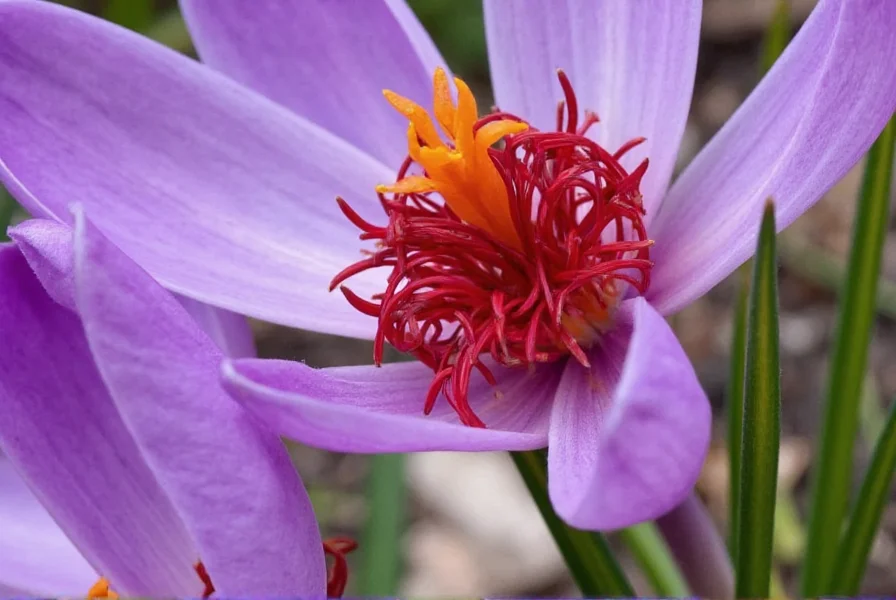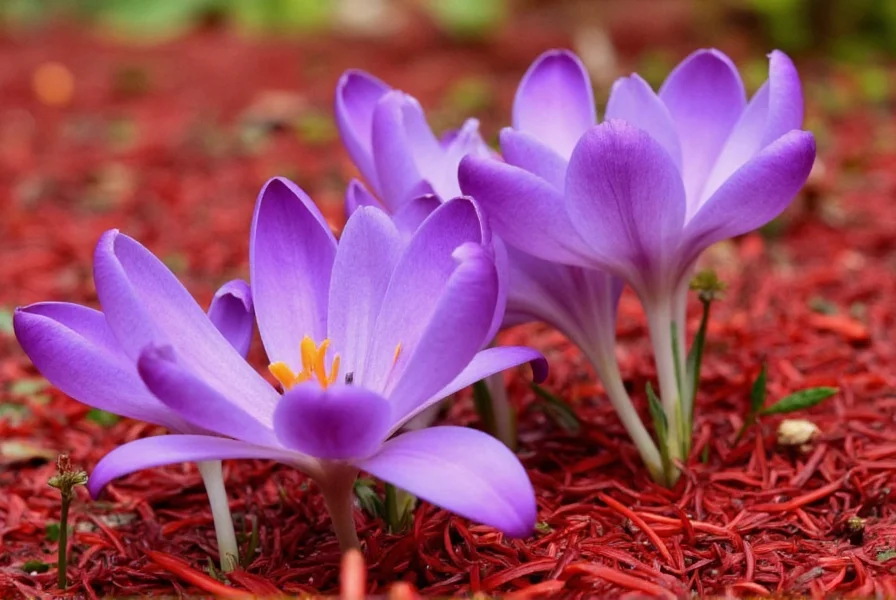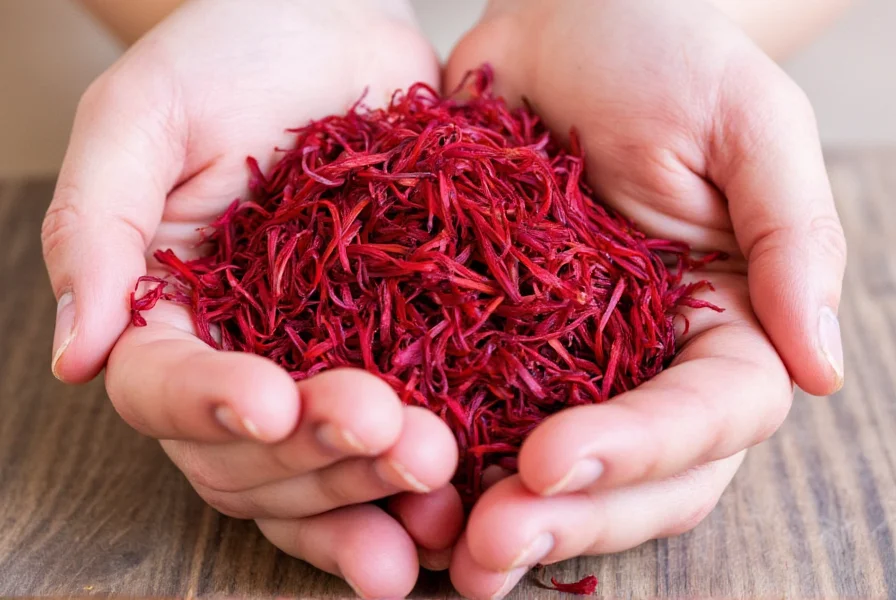Understanding the botanical reality of saffron crocus sativus reveals why this spice commands such extraordinary value. Unlike common garden crocuses, Crocus sativus produces no seeds and relies entirely on human intervention for propagation. The plant's unique biology directly impacts saffron production, quality, and pricing in global markets.
Botanical Characteristics of Saffron Crocus
Crocus sativus belongs to the Iridaceae family and displays distinctive features that differentiate it from other crocus species. The plant grows to 20-30 cm in height with narrow, grass-like leaves that appear simultaneously with the flowers. Its most remarkable characteristic is the deep crimson stigmas that protrude from each purple bloom.
Scientific analysis confirms that saffron crocus contains three key compounds responsible for its value:
| Compound | Function | Concentration in Saffron |
|---|---|---|
| Crocin | Primary coloring agent | 6-18% |
| Picrocrocin | Responsible for bitter taste | 3-10% |
| Safranal | Volatile oil providing aroma | 0.5-1.5% |
These compounds work synergistically to create saffron's distinctive color, flavor, and aroma profile. The concentration of these compounds varies based on growing conditions, harvest timing, and processing methods—factors critical for identifying high quality saffron crocus products.

Historical Significance and Origin
Archaeological evidence suggests saffron cultivation began in Bronze Age Greece around 1600-1700 BCE. Ancient Minoan frescoes depict women and monkeys gathering crocus flowers, indicating early recognition of saffron crocus sativus harvesting challenges. The plant likely originated as a spontaneous mutation in野生 crocus populations in Southwest Asia.
Unlike most plants, Crocus sativus cannot reproduce through seeds due to its triploid chromosome structure (3n=24). This genetic anomaly makes the plant completely dependent on human propagation through corm division—a key factor in understanding why saffron remains so expensive despite centuries of cultivation.
Cultivation Requirements for Optimal Yield
Successful saffron crocus cultivation requires specific environmental conditions:
- Climate: Mediterranean-type climate with hot, dry summers and cool, wet springs
- Soil: Well-drained, calcareous loam with pH 6-8
- Sun exposure: Full sun (minimum 6 hours daily)
- Elevation: 200-2,000 meters above sea level
- Water requirements: Minimal during dormancy, moderate during growth
Iran currently produces over 90% of the world's saffron, with traditional cultivation methods passed down through generations. Spanish and Kashmiri saffron also commands premium prices due to specific terroir conditions that enhance saffron crocus chemical composition.
The Labor-Intensive Harvesting Process
The extraordinary value of saffron directly correlates with its harvesting process. Each Crocus sativus flower blooms for only 24-48 hours in autumn, typically between 5-10 AM. Harvesters must work at dawn to collect flowers before they wilt in the morning sun.
After collection, workers immediately separate the three delicate stigmas from each flower—a process requiring exceptional dexterity. It takes approximately 40 hours of skilled labor to harvest and process 150,000 flowers needed for one kilogram of dried saffron. This explains the fundamental economics behind why saffron crocus products cost thousands of dollars per pound.

Quality Assessment of Saffron Products
Not all saffron products deliver equal value. The ISO 3632 standard provides objective measurements for saffron quality based on three parameters:
- Coloring strength (crocin): Measured as absorbance at 440 nm
- Bitterness (picrocrocin): Measured as absorbance at 257 nm
- Aroma (safranal): Measured as absorbance at 330 nm
Grade I saffron (the highest quality) must meet minimum thresholds of 190 for coloring strength, 100 for bitterness, and 20 for aroma. Consumers seeking authentic saffron crocus benefits should look for products with ISO certification and transparent sourcing information.
Common Misconceptions About Saffron
Several myths persist about saffron crocus that deserve clarification:
- Myth: All purple crocus flowers produce saffron
Fact: Only Crocus sativus produces the saffron spice; other crocus species contain different compounds - Myth: Saffron's high price is primarily due to marketing
Fact: The price reflects genuine production costs—labor accounts for 80-90% of saffron's final cost - Myth: Saffron has significant psychoactive properties
Fact: While saffron contains compounds with potential health benefits, it does not produce psychoactive effects at culinary doses
Conclusion
Crocus sativus represents one of agriculture's most fascinating relationships between humans and plants. Its sterile nature has created a unique dependency where human cultivation ensures the plant's survival while the plant provides extraordinary value to human culture. Understanding the botanical reality of saffron crocus sativus helps consumers appreciate why this spice remains both culturally significant and economically valuable after thousands of years.
What makes Crocus sativus different from other crocus species?
Crocus sativus is a sterile triploid plant that cannot produce seeds. Unlike other crocus species, it must be propagated through manual corm division. It's the only crocus species that produces the crimson stigmas used to make saffron spice, containing unique compounds like crocin, picrocrocin, and safranal.
Why does genuine saffron cost so much compared to other spices?
Saffron's high cost stems from its extremely labor-intensive production process. Each flower produces only three stigmas, and it takes approximately 150,000 flowers to yield one kilogram of dried saffron. The harvest must occur at dawn during a brief autumn blooming period, requiring skilled laborers to hand-pick and process the delicate stigmas before they wilt.
How can consumers identify authentic saffron products?
Authentic saffron should meet ISO 3632 quality standards, with documentation verifying its coloring strength (minimum 190), bitterness (minimum 100), and aroma (minimum 20). Genuine saffron threads are deep red with orange tips, release color gradually in warm water, and have a distinctive hay-like aroma. Avoid products that are uniformly red, dissolve instantly in water, or have a chemical smell.
Can saffron crocus be grown in home gardens?
Yes, Crocus sativus can be grown in home gardens in regions with suitable climates (Mediterranean-type with hot dry summers and cool wet springs). However, home cultivation rarely produces enough saffron for culinary use—approximately 50 flowers yield just 1 gram of dried saffron. Gardeners should plant corms 10-15 cm deep in well-drained soil with full sun exposure during summer dormancy.
What are the primary growing regions for saffron crocus today?
Iran produces over 90% of the world's saffron, primarily in the Khorasan region. Other significant producers include Spain (particularly La Mancha region), Kashmir (India), Greece (Kozani region), and Morocco. Each region produces saffron with distinctive characteristics based on local terroir, with Iranian saffron typically having the highest coloring strength and Spanish saffron noted for its balanced flavor profile.











 浙公网安备
33010002000092号
浙公网安备
33010002000092号 浙B2-20120091-4
浙B2-20120091-4